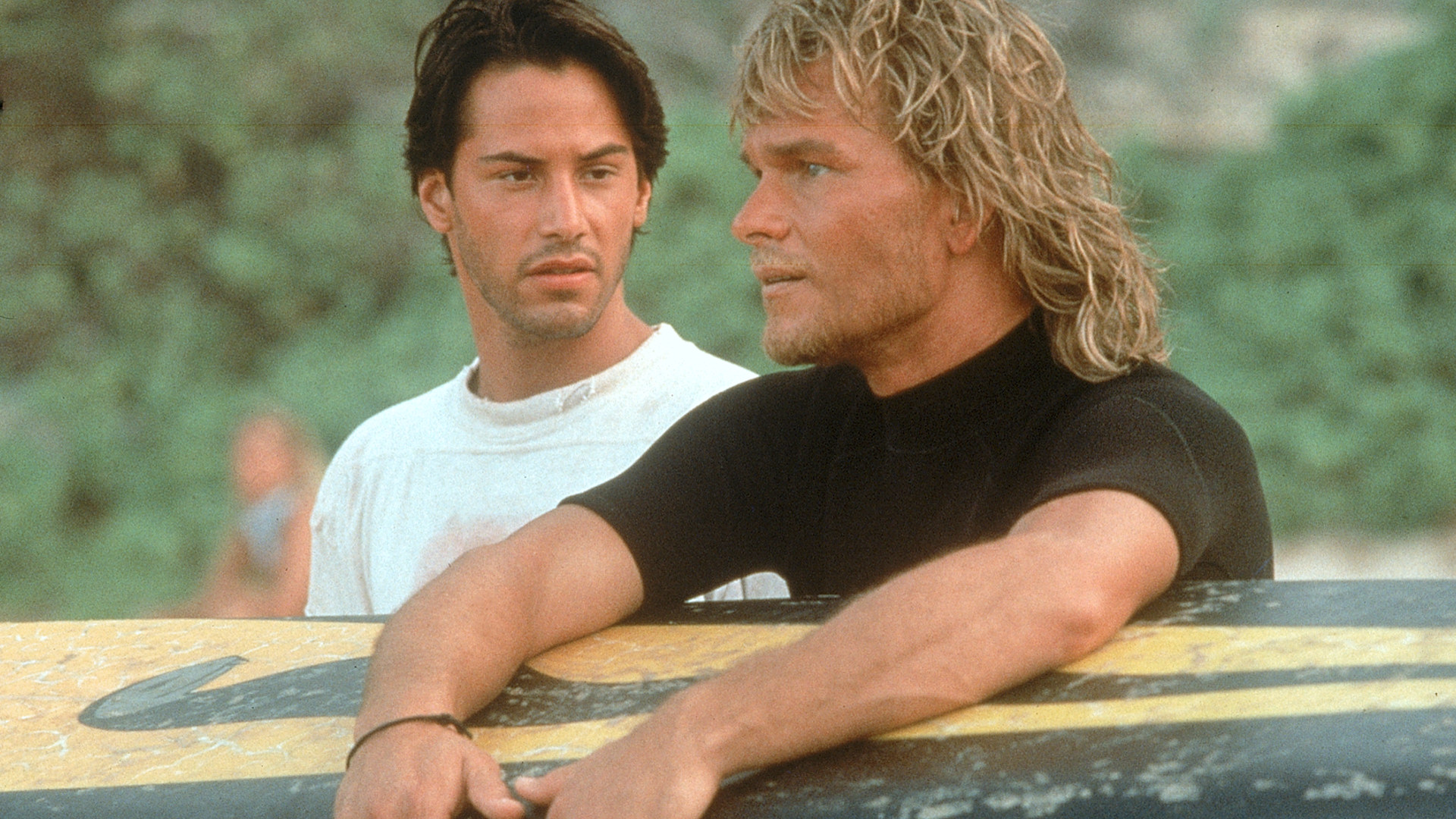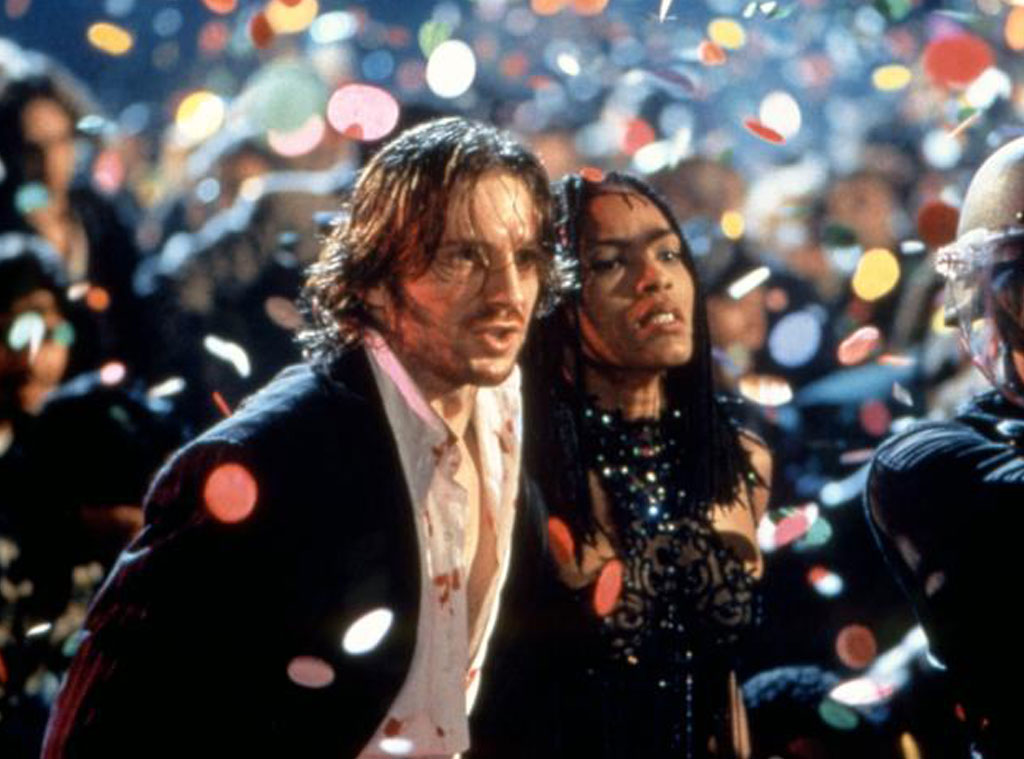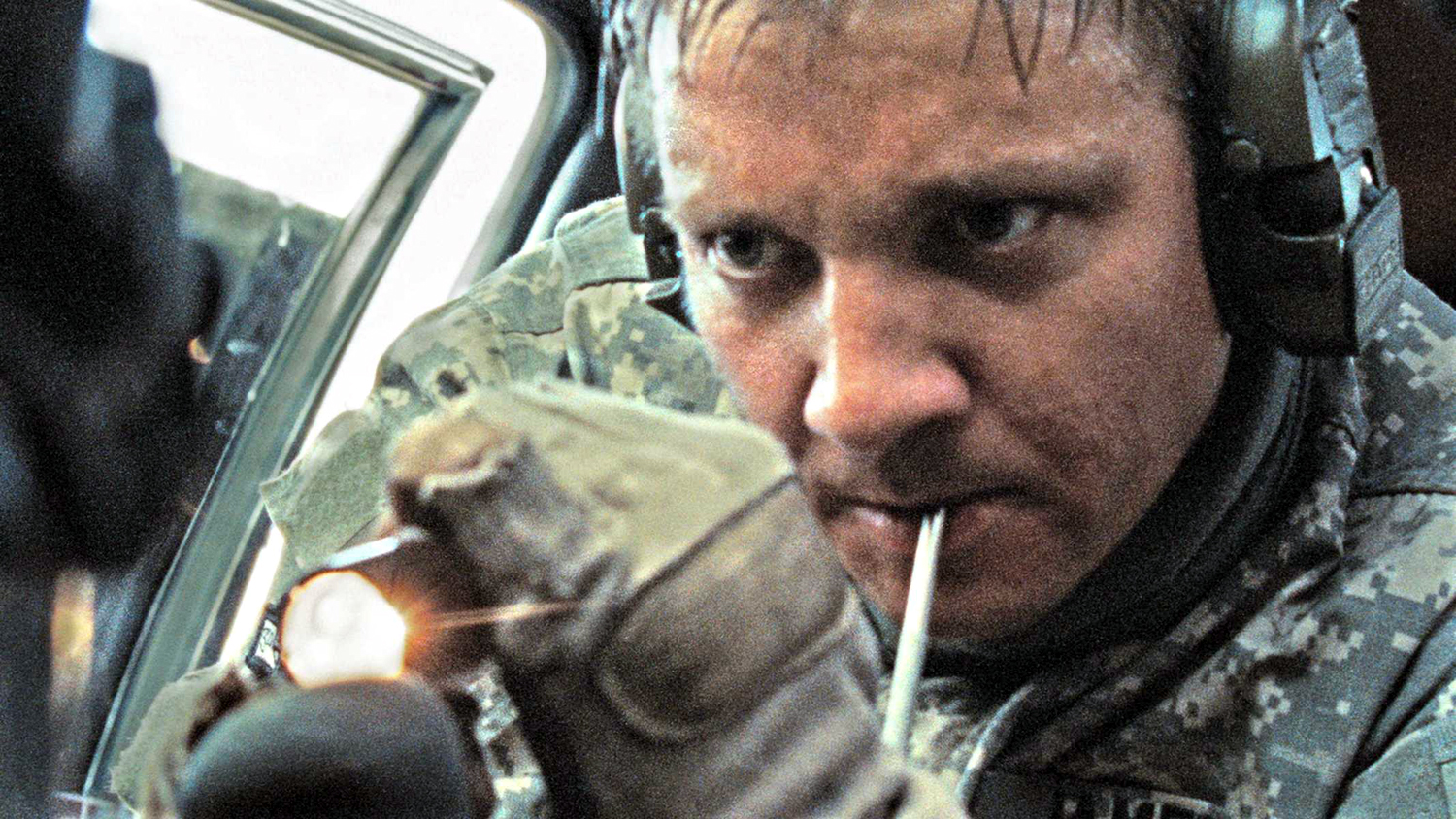By providing your information, you agree to our Terms of Use and our Privacy Policy. We use vendors that may also process your information to help provide our services. This site is protected by reCAPTCHA Enterprise and the Google Privacy Policy and Terms of Service apply.
The Films of Kathryn Bigelow, Ranked From Worst to Best

READ MORE: Kathryn Bigelow and Tom Hardy Team Up For Post-9/11 Drama ‘The True American’
9. “The Weight of Water” (2002)
8. “K-19: The Widowmaker” (2002)
 Starring Harrison Ford and Liam Neeson as two Cold War Soviet submarine officers, “K-19: The Widowmaker” is pretty much what you would expect from a would-be blockbuster submarine actioner (tense standoffs, factual inaccuracies, a bloated budget). Tackling a claustrophobic, testosterone-charged atmosphere, Bigelow relies on deeply emotive close-ups and her typically speedy pace, but hardly strays enough from the traditions of the submarine drama (established by the likes of “Destination: Tokyo”) to be notable (other than Russian characters being given American actioner treatment). Even Ford and Neeson’s Ruskie accents are half decent for American audiences. Bigelow does a solid job with the material, but “Das Boot” this is not.
Starring Harrison Ford and Liam Neeson as two Cold War Soviet submarine officers, “K-19: The Widowmaker” is pretty much what you would expect from a would-be blockbuster submarine actioner (tense standoffs, factual inaccuracies, a bloated budget). Tackling a claustrophobic, testosterone-charged atmosphere, Bigelow relies on deeply emotive close-ups and her typically speedy pace, but hardly strays enough from the traditions of the submarine drama (established by the likes of “Destination: Tokyo”) to be notable (other than Russian characters being given American actioner treatment). Even Ford and Neeson’s Ruskie accents are half decent for American audiences. Bigelow does a solid job with the material, but “Das Boot” this is not.7. “Point Break” (1991)
 Following two genre-bending gang films (“The Loveless” and “Near Dark”) and a foray into police drama (“Blue Steel”), Bigelow helmed “Point Break,” one of the most iconic bromances of all time (a concept wonderfully spoofed years later in “Hot Fuzz”) and a staple of any 90s nostalgia (a big topic on VH1’s “I Love The 90s” 1991 episode). The plot concerns young F.B.I. agent Johnny Utah (Keanu Reeves) infiltrating a surfer gang suspected of perpetrating a slew of “Ex-Presidents” robberies (in which they wore masks of ex-presidents). Like past Bigelow heroes, Utah is an upright outsider who falls for an enigmatic rebel. Instead of a cute vampire or dashing gun-fetishist, Utah becomes entranced with surfing gang leader Bodhi (Patrick Swayze), who is described as having “this gift for blankness” and spouts zen-ified wisdom like “It’s not tragic to die doing what you love” to a gaggle of athletic, sunbathed cronies. Forgoing her characteristic shooting style, Bigelow still manages to keep up her now-trademark action-packed, adrenaline-thumping pace, from a handheld chase of Utah running after Bodhi to a heart-racing, life-or-death skydiving scene. The film did pretty well at the box office, making $83 million worldwide — and incredibly well among younger crowd, with an MTV Award nomination for “Best Action Sequence” and Reeves winning for “Most Desirable Male” over Swayze.
Following two genre-bending gang films (“The Loveless” and “Near Dark”) and a foray into police drama (“Blue Steel”), Bigelow helmed “Point Break,” one of the most iconic bromances of all time (a concept wonderfully spoofed years later in “Hot Fuzz”) and a staple of any 90s nostalgia (a big topic on VH1’s “I Love The 90s” 1991 episode). The plot concerns young F.B.I. agent Johnny Utah (Keanu Reeves) infiltrating a surfer gang suspected of perpetrating a slew of “Ex-Presidents” robberies (in which they wore masks of ex-presidents). Like past Bigelow heroes, Utah is an upright outsider who falls for an enigmatic rebel. Instead of a cute vampire or dashing gun-fetishist, Utah becomes entranced with surfing gang leader Bodhi (Patrick Swayze), who is described as having “this gift for blankness” and spouts zen-ified wisdom like “It’s not tragic to die doing what you love” to a gaggle of athletic, sunbathed cronies. Forgoing her characteristic shooting style, Bigelow still manages to keep up her now-trademark action-packed, adrenaline-thumping pace, from a handheld chase of Utah running after Bodhi to a heart-racing, life-or-death skydiving scene. The film did pretty well at the box office, making $83 million worldwide — and incredibly well among younger crowd, with an MTV Award nomination for “Best Action Sequence” and Reeves winning for “Most Desirable Male” over Swayze.6. “Blue Steel” (1989)
5. “Near Dark” (1987)
 For her second feature, Bigelow set out to make an unconventional Western with co-writer Eric Red. Coming up short on funding, they turned to the late 80s vampire revival craze (“Fright Night,” “The Lost Boys”) and melded Western themes with vampire and biker gangs to make the cult classic “Near Dark.” The film opens on handsome yokel Caleb (Adrian Pasdar) falling for attractive stranger Mae (Jenny Wright), strange in that she isn’t from around these parts and in that she scares off horses. One thing leads to another and he gets turned into a vampire, rustled into Mae’s marauding gang of dusty, crusty lowlifes. As with Willem Dafoe in “The Loveless,” a then-unknown Bill Paxton carries the film with his over-bounding magnetism as Severen, the gang sociopath and rebel. Shameless and beautifully shot, he smacks his lips and licks his fingers on a victim’s blood with the confidence of a good ol’ boy after some down home barbecue, acting as an arbiter of what Manohla Dargis characterized as the film’s “kind of hot, sticky, shocking violence that’s alternately exciting and appalling.” The film falls under a too-neat, cop-out third act involving vampire-ending sunlight and cure-all blood transfusions, but transcends those boundaries as whole to become the most full-bodied interpretation of vampiric Americana. It combines just the right elements of romanticism, realism and shock value. A perfect anti-dote to mythos-heavy Anne Rice novels and Twi-hards.
For her second feature, Bigelow set out to make an unconventional Western with co-writer Eric Red. Coming up short on funding, they turned to the late 80s vampire revival craze (“Fright Night,” “The Lost Boys”) and melded Western themes with vampire and biker gangs to make the cult classic “Near Dark.” The film opens on handsome yokel Caleb (Adrian Pasdar) falling for attractive stranger Mae (Jenny Wright), strange in that she isn’t from around these parts and in that she scares off horses. One thing leads to another and he gets turned into a vampire, rustled into Mae’s marauding gang of dusty, crusty lowlifes. As with Willem Dafoe in “The Loveless,” a then-unknown Bill Paxton carries the film with his over-bounding magnetism as Severen, the gang sociopath and rebel. Shameless and beautifully shot, he smacks his lips and licks his fingers on a victim’s blood with the confidence of a good ol’ boy after some down home barbecue, acting as an arbiter of what Manohla Dargis characterized as the film’s “kind of hot, sticky, shocking violence that’s alternately exciting and appalling.” The film falls under a too-neat, cop-out third act involving vampire-ending sunlight and cure-all blood transfusions, but transcends those boundaries as whole to become the most full-bodied interpretation of vampiric Americana. It combines just the right elements of romanticism, realism and shock value. A perfect anti-dote to mythos-heavy Anne Rice novels and Twi-hards.4. “Strange Days” (1995)
 Co-written with Jay Cocks from James Cameron’s original script, Bigelow’s “Strange Days” is a sci-fi thriller ahead of its time: Consider its prescient use of recreational virtual reality, condemnation of the ties between race and police brutality, and the well-toned Angela Bassett saving tweaked-out Ralph Fiennes.
Co-written with Jay Cocks from James Cameron’s original script, Bigelow’s “Strange Days” is a sci-fi thriller ahead of its time: Consider its prescient use of recreational virtual reality, condemnation of the ties between race and police brutality, and the well-toned Angela Bassett saving tweaked-out Ralph Fiennes.
Set in pre-apocalyptic 1999, the plot follows Lenny (Fiennes), an ex-cop turned seedy SQUID (illegal virtual reality discs) dealer, getting wrapped up in a murderous conspiracy that could possibly trace all the way up the police hierarch — but also to Lenny’s “one who got away” ex Faith (Juliette Lewis). Enlisting the help of his friends, including limo driver Mace (Bassett), Lenny tries to track down the killer of an acquaintance and save Faith while bringing wrongdoers to justice. (Think “Blade Runner” meets “Inherent Vice” with hints of “Her” and “Demolition Man.”) The editing is spectacular: A fast-paced robbery jolts the audience into the world of SQUID recordings and the adrenaline never drops too low from there, spiked by cop violence, hooker rape, and multiple murders. Bigelow twists audience expectations with Hitchcockian results. Underneath the aforementioned convoluted plot and futuristic noir trappings, “Strange Days” also provides some of the most thought-provoking social commentary on race and the over-militarized police state in American movies.
3. “The Loveless” (1981)
During the film’s opening sequence, the camera pans up Vance’s body and we are there — hook, line and sinker — for his threateningly seductive, almost too obvious brand of cool machismo. Upturning Reagan-era 1950s nostalgia, “The Loveless” manages to both celebrate and uproot the genre through deliberately slow pacing and a feminist undercurrent — the latter explored via the gang’s slut and the town tomboy, who catches Vance’s eye. Rather than following a formulaic narrative, the film is more like a meditation on a set of tableaux strung together by close-ups of shiny iconography (leather, knives, and bikes alongside red Coke machines and corvettes) and a Rockabilly soundscape (including Little Richard, The Diamonds, and Brenda Lee).
2. “Zero Dark Thirty” (2012)
 In her second installment of contemporary wartime drama (one of the least marketable genres), Bigelow shakes things up again and turns her lens to the hunt for Osama bin Laden, specifically (and arguably) as the woman behind it. Whereas “The Hurt Locker” focused on interrelationships and reflected the ambiguity of the Iraq War’s goals, “Zero Dark Thirty” powers ahead with the direct mission of finding Osama bin Laden through any means: questioning high-ranking officials, waterboarding, or going it alone.
In her second installment of contemporary wartime drama (one of the least marketable genres), Bigelow shakes things up again and turns her lens to the hunt for Osama bin Laden, specifically (and arguably) as the woman behind it. Whereas “The Hurt Locker” focused on interrelationships and reflected the ambiguity of the Iraq War’s goals, “Zero Dark Thirty” powers ahead with the direct mission of finding Osama bin Laden through any means: questioning high-ranking officials, waterboarding, or going it alone.
Maya (Jessica Chastain, giving her most commanding performance to date) flies in the face of a male-heavy military industrial complex, risking her career and countrymen on the strength of her individual hunches and research (“I know certainty freaks you guys out, but it’s 100.”). Through Maya’s hands-on quest, Bigelow taps into some of her earlier tropes: the tired woman-in-a-man’s-world and police procedural plot (“Blue Steel”) as well as a vital military setting (“The Hurt Locker” and “K-19: The Widowmaker”). She places the audience not only within the inner-workings of the FBI abroad through Maya and the sniper team set loose on bin Laden’s compound with POV night-vision lensing but presses the audiences to confront America’s extreme interrogation techniques. The finale asks us whether the eventual outcome justified the terrible wartime tactics leading up to it.
1. “The Hurt Locker” (2009)
 “The rush of battle is often a potent and lethal addiction, for war is a drug.” — Chris Hedges, “War Is A Force That Gives Us Meaning.”
“The rush of battle is often a potent and lethal addiction, for war is a drug.” — Chris Hedges, “War Is A Force That Gives Us Meaning.”
So opens “The Hurt Locker,” a seminal film exploring the tensions of an American three-man bomb disposal unit in 2004 Iraq. The unit patrols the dusty, war-torn landscape (shot over the border in Jordan), ever in danger of militant forces and IEDs (improvised explosive devices). Lead by a maverick-bordering-on-maniac Staff Sergeant William James (Jeremy Renner, giving a subtler-yet-more-intense Riggs for a career-making performance), James has disarmed 783 bombs and often opts to go in himself rather than leave it up to the robot. The film is a high-adrenaline drive through the Iraq War, with Bigelow bringing both her action sensibilities ( “Point Break” and “Strange Days”) and tendency to subvert classic genres (“The Loveless”) to a classic wartime setting. Bigelow immerses the audience in the soldiers’ POVs by focusing on the squadron’s dynamics rather than a shared rallying cry; meanwhile, the use of four Super 16mm cameras capture the visceral realities of war (the film’s name itself is military slang for “somewhere you don’t want to be”). Bigelow’s play on the unseen/unknown (the quiet before the bomb) resonates even more, resulting in an uneasy feeling that stays with the audience long after the credits roll.
By providing your information, you agree to our Terms of Use and our Privacy Policy. We use vendors that may also process your information to help provide our services. This site is protected by reCAPTCHA Enterprise and the Google Privacy Policy and Terms of Service apply.















